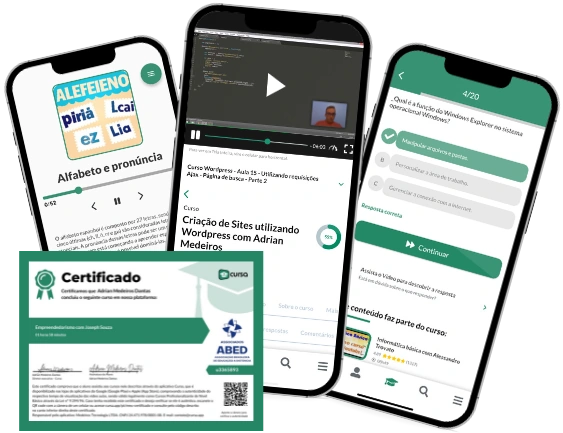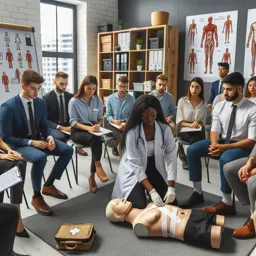Course content
Importance of Wilderness First Aid
2Differences Between Wilderness and Urban First Aid
3Legal Considerations and Responsibilities
4First-Aid Kits for Wilderness and Remote Locations
5Treatment of Cuts, Scrapes and Wounds
6Managing Burns and Blisters
7Fractures, Sprains, and Dislocations
8Animal and Insect Bites and Stings
9Assessing an Emergency Scene
10Patient Assessment and Stabilization
11CPR and Emergency Rescue Breathing
12Bleeding Control and Shock Management
13Hypothermia: Prevention, Recognition, and Treatment
14Frostbite and Cold Injuries
15Heat Stroke, Heat Exhaustion, and Hyperthermia
16Dehydration, Sunburn, and Altitude Sickness
17Shelter Building and Fire Starting
18Water Sourcing and Purification Methods
19Food Procurement and Edible Plants
20Navigation, Signaling, and Rescue Techniques
21Determining When to Evacuate
22Improvised Stretchers and Transport Techniques
23Emergency Communication Devices and Methods
24Working with Search and Rescue Teams
25Scenario-Based Training and Simulations
26Analyzing Real-Life Wilderness Emergencies
27Lessons Learned from Past Experiences
28Review of Wilderness First Aid Principles and Techniques
29Written and Practical Exams
30Certification and Post-Course Recommendations
Course Description
The 'First Aid for Outdoor and Wilderness Emergencies' course is an essential resource for anyone venturing into nature, providing crucial skills and knowledge necessary for handling unexpected situations. The course, spanning 30 pages of content, dives deep into the Health category, specifically in the First Aid subcategory, offering comprehensive guidance on managing medical emergencies in remote environments.
Starting with the 'Importance of Wilderness First Aid,' participants gain an understanding of why these skills are vital when access to professional medical help might be delayed. The course then contrasts 'Differences Between Wilderness and Urban First Aid,' emphasizing the unique challenges faced in remote settings, necessitating a different approach to emergency care.
'Legal Considerations and Responsibilities' play a crucial part, ensuring that participants are aware of the legal implications of providing first aid in wilderness contexts. The course outlines essential 'First-Aid Kits for Wilderness and Remote Locations,' guiding participants in preparing for any eventuality with appropriate supplies.
Practical modules such as 'Treatment of Cuts, Scrapes and Wounds,' 'Managing Burns and Blisters,' and 'Fractures, Sprains, and Dislocations' equip participants with hands-on skills to manage common injuries. Guidance is provided for dealing with 'Animal and Insect Bites and Stings,' a frequent hazard in wilderness environments.
Participants learn to 'Assess an Emergency Scene' and perform 'Patient Assessment and Stabilization,' crucial first steps in any emergency response. The course also covers life-saving techniques such as 'CPR and Emergency Rescue Breathing,' 'Bleeding Control and Shock Management,' and 'Hypothermia: Prevention, Recognition, and Treatment.'
Practical advice on managing 'Frostbite and Cold Injuries,' 'Heat Stroke, Heat Exhaustion, and Hyperthermia,' and 'Dehydration, Sunburn, and Altitude Sickness' ensures readiness for climate-related emergencies. The course also teaches 'Shelter Building and Fire Starting,' 'Water Sourcing and Purification Methods,' and 'Food Procurement and Edible Plants' to manage survival needs.
Skills in 'Navigation, Signaling, and Rescue Techniques' are developed, alongside 'Determining When to Evacuate.' Participants are trained in 'Improvised Stretchers and Transport Techniques' for patient movement. The course provides insights into 'Emergency Communication Devices and Methods,' enhancing connectivity in emergencies.
Understanding the role of 'Working with Search and Rescue Teams' enhances coordination during rescues. 'Scenario-Based Training and Simulations' boost confidence, while 'Analyzing Real-Life Wilderness Emergencies' offers insights into practical applications. 'Lessons Learned from Past Experiences' highlight key takeaways, reinforcing the core 'Review of Wilderness First Aid Principles and Techniques.'
The course concludes with 'Written and Practical Exams,' ensuring mastery of content. Successful participants earn certification, with 'Certification and Post-Course Recommendations' guiding further learning for continued preparedness.
This free course includes:
Audiobook with 1h49m
30 content pages
Digital certificate of course completion (Free)
Exercises to train your knowledge






















